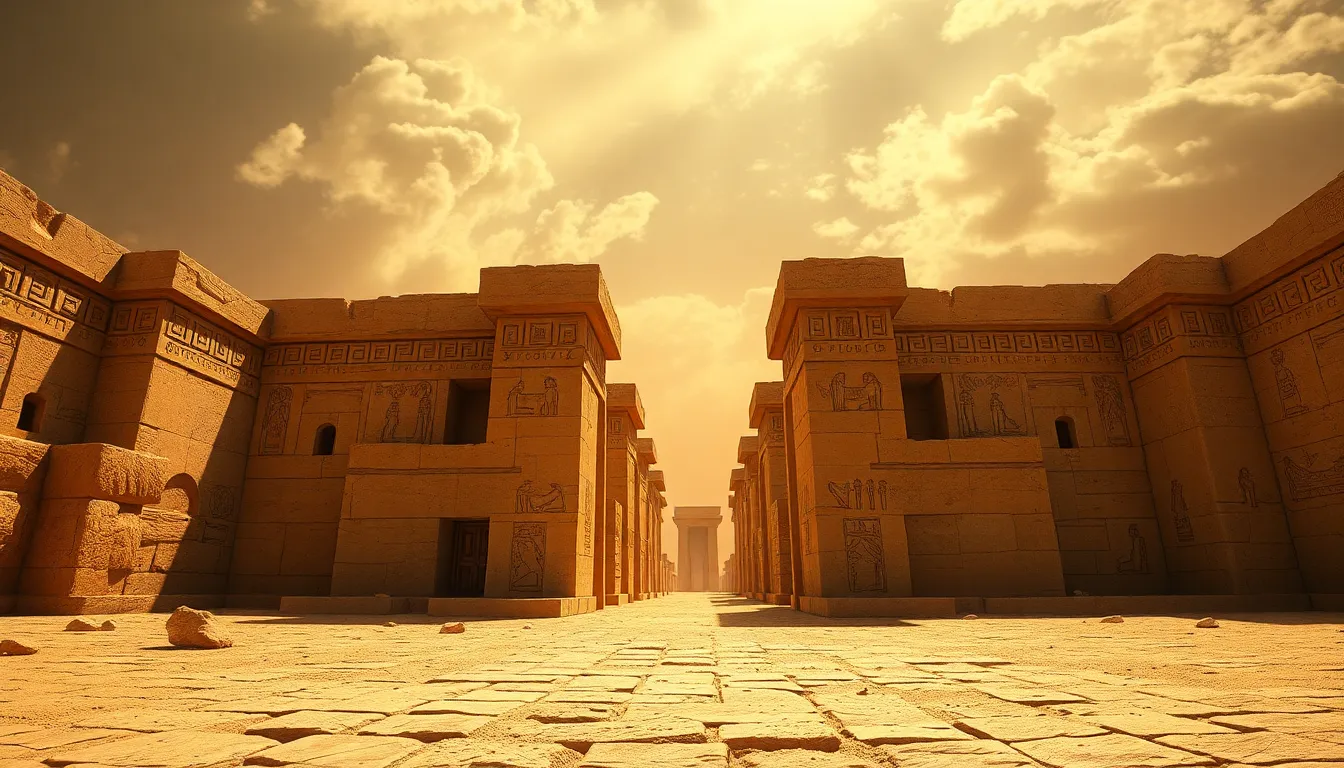The Journey of the Soul: Funerary Texts Explained
I. Introduction to Funerary Texts
Funerary texts are ancient writings that provide insights into the beliefs and practices surrounding death and the afterlife in various cultures. These texts are significant as they offer a glimpse into how different civilizations understood the journey of the soul and the rituals associated with it.
Cultural perspectives on the afterlife vary widely, with some societies believing in reincarnation, while others view death as a passage to another realm. Funerary texts serve as crucial artifacts that help us comprehend these diverse beliefs and the importance placed on the afterlife.
This article aims to explore the historical context, types, symbolism, and contemporary relevance of funerary texts, shedding light on their role in shaping cultural identities and beliefs about the journey of the soul.
II. Historical Context of Funerary Texts
The origins of funerary texts can be traced back to ancient civilizations, where they evolved in response to societal needs and spiritual beliefs. Typically, these texts were inscribed on tombs, sarcophagi, or included in burial goods, reflecting the views of the time regarding death and the afterlife.
Key ancient cultures that utilized funerary texts include:
- Egyptians: The most famous funerary texts, such as the “Book of the Dead,” were integral to their burial practices.
- Greeks: Funerary inscriptions were common, reflecting individual achievements and societal values.
- Chinese: Texts associated with ancestor worship and beliefs in spiritual realms played a significant role in funerary practices.
These texts not only guided the deceased in the afterlife but also provided comfort and assurance to the living regarding their loved ones’ spiritual journey.
III. Major Types of Funerary Texts
A. Egyptian Book of the Dead
The “Book of the Dead” is a collection of spells, prayers, and incantations designed to assist the deceased in navigating the afterlife. Key themes include judgment, protection, and resurrection.
This text was crucial in guiding the deceased through the perilous journey to the afterlife, where they would face the judgment of Osiris. The presence of these texts in tombs reflects the Egyptians’ profound belief in the afterlife.
B. Greek Funerary Inscriptions
Greek funerary inscriptions served to memorialize the dead, often detailing their accomplishments and virtues. These inscriptions were typically etched on tombstones and provided insight into societal values.
Common motifs included themes of mortality, glory, and the fleeting nature of life, encapsulating the Greek understanding of existence.
C. Buddhist Sutras and Their Role in Funerary Practices
Buddhist funerary texts, often in the form of sutras, emphasize concepts of rebirth and the cyclical nature of life. These texts guide the deceased’s spirit and provide teachings for the living regarding the nature of existence.
Rituals associated with these texts, such as chanting and offerings, play a vital role in aiding the deceased’s transition to the next life.
IV. Symbolism and Imagery in Funerary Texts
Symbolism is a powerful element in funerary texts, often conveying complex ideas through simple images. Common symbols include:
- Scales: Representing the weighing of the heart against a feather in the Egyptian afterlife.
- Lotus Flowers: Symbolizing purity and rebirth across various cultures.
- Skulls and Bones: A reminder of mortality and the transient nature of life.
Artistic representations accompanying funerary texts enhance their meanings, often depicting gods, mythical creatures, and scenes of the afterlife, which help the living understand the deceased’s journey.
V. The Journey of the Soul According to Funerary Texts
The journey of the soul, as depicted in funerary texts, often involves several stages:
- Departure: The moment of death and the initial separation of the soul from the body.
- Judgment: A critical stage where the soul is evaluated based on its earthly actions.
- Transition: The soul navigates various challenges and obstacles in the afterlife.
- Rebirth or Rest: The final outcome, either through reincarnation or achieving eternal rest in a spiritual realm.
Rituals play a significant role in assisting the soul’s transition, with offerings, prayers, and ceremonies designed to ensure a safe passage and favorable judgment.
VI. Funerary Texts in Contemporary Practices
Modern adaptations of ancient funerary texts can be observed in various cultures. Many contemporary practices draw inspiration from these texts, incorporating traditional beliefs into modern funeral rites.
The influence of funerary texts is notable in current beliefs about the afterlife, where elements of ancient wisdom continue to resonate. Comparative analysis reveals similarities and differences in how cultures honor their dead, often blending ancient customs with contemporary values.
VII. The Impact of Funerary Texts on Cultural Identity
Funerary texts reflect the societal values and beliefs of the cultures that produced them. They illustrate how different civilizations understand life, death, and the afterlife, contributing to a collective cultural identity.
Additionally, these texts play a vital role in preserving cultural heritage, with many societies placing significant importance on their funerary traditions. Case studies, such as the Egyptian “Book of the Dead” or Greek epitaphs, illustrate how these texts have shaped and continue to influence cultural narratives.
VIII. Conclusion
In summary, funerary texts offer invaluable insights into the beliefs and practices surrounding death and the afterlife. They reflect the values of ancient societies and continue to influence contemporary understandings of the journey of the soul.
Understanding these texts is crucial for appreciating the complexities of human beliefs about mortality and existence. The journey of the soul, as depicted in these writings, remains a significant aspect of human history, illuminating our shared quest for meaning beyond life.




